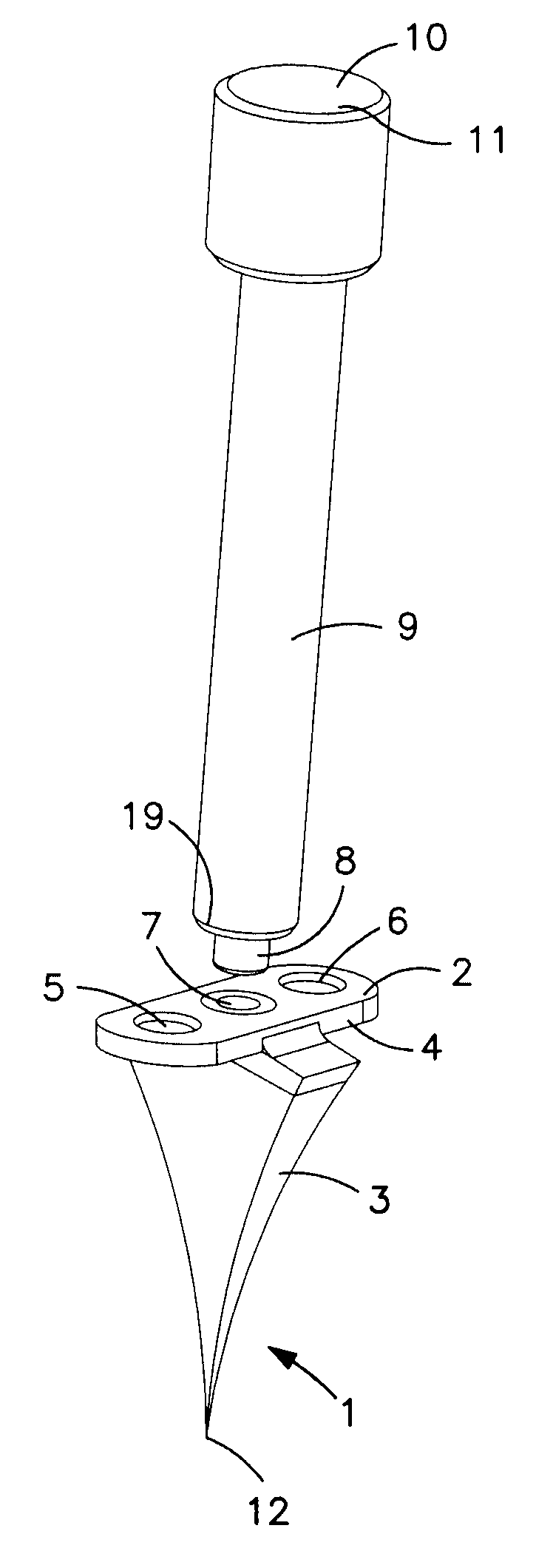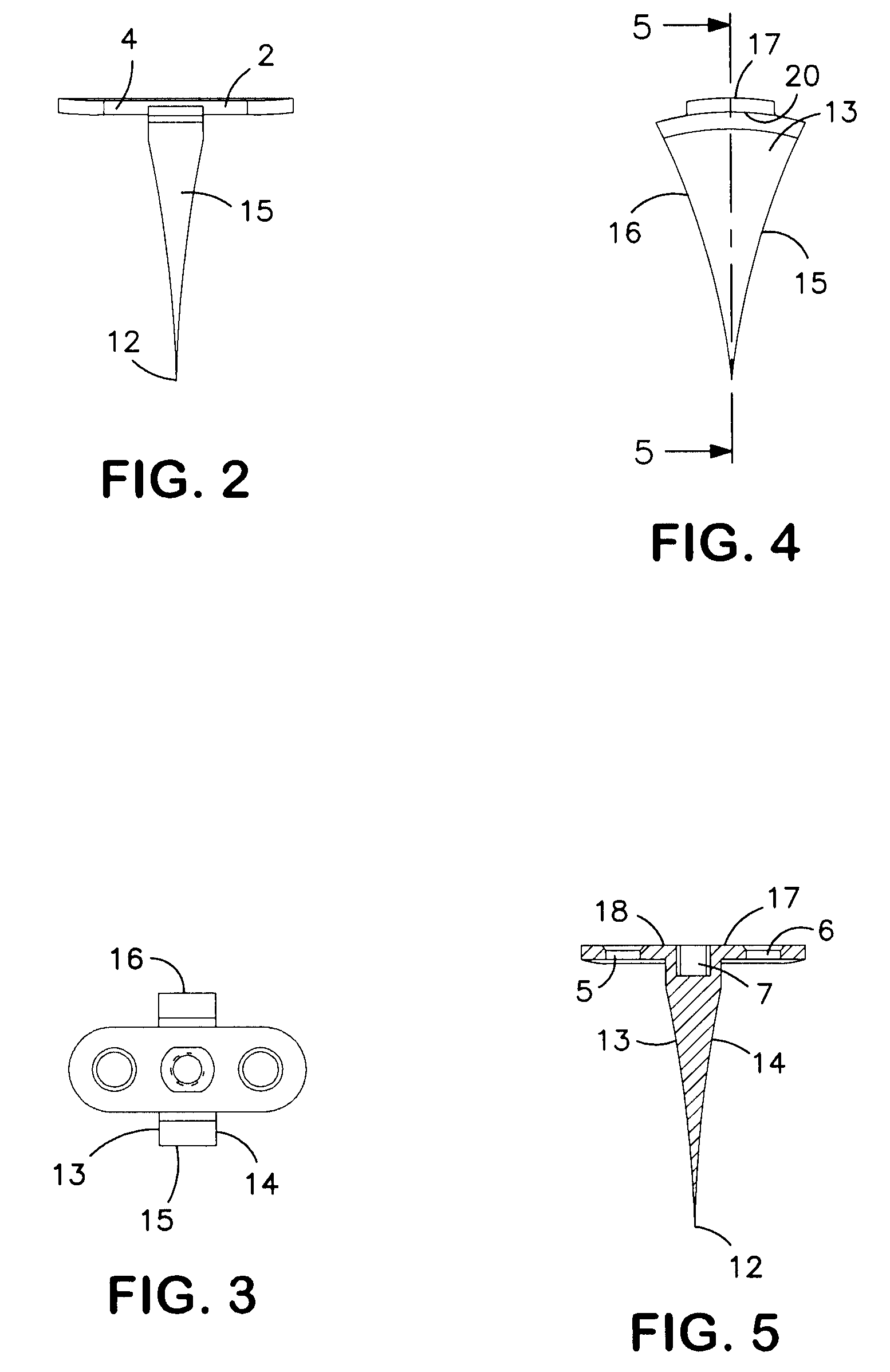Medical foot implant and system
a technology of foot implant and system, applied in the field of medical foot implants, can solve problems such as unintentional damage to the rear cortical bone, and achieve the effect of facilitating introduction (forcing)
- Summary
- Abstract
- Description
- Claims
- Application Information
AI Technical Summary
Benefits of technology
Problems solved by technology
Method used
Image
Examples
Embodiment Construction
[0033]FIG. 1 shows a medical foot implant. The foot implant 1 comprises a fastening section 2 extending transversely to the longitudinal extension of a wedge section 3. The fastening section 2 comprises a plate 4 arched (slightly) transversely to its longitudinal extension, which is fitted with a first and a second clearance opening 5, 6. The longitudinal middle axes of the clearance openings 5, 6 extend parallel to the longitudinal extension of the wedge section 3. The clearance openings 5, 6 respectively serve to receive a bone screw, not illustrated here, for fixing the foot implant from the outside to two adjacent bone segments or bones. As is evident from FIG. 5, the clearance openings 5, 6 are designed chamfered in their upper region for easier finding.
[0034]Arranged between the clearance openings 5, 6 spaced transversely to the longitudinal extension of the wedge section 3 is an inner thread 7 which extends through the plate 4 and enters the wedge section 3. The inner thread ...
PUM
 Login to View More
Login to View More Abstract
Description
Claims
Application Information
 Login to View More
Login to View More - R&D
- Intellectual Property
- Life Sciences
- Materials
- Tech Scout
- Unparalleled Data Quality
- Higher Quality Content
- 60% Fewer Hallucinations
Browse by: Latest US Patents, China's latest patents, Technical Efficacy Thesaurus, Application Domain, Technology Topic, Popular Technical Reports.
© 2025 PatSnap. All rights reserved.Legal|Privacy policy|Modern Slavery Act Transparency Statement|Sitemap|About US| Contact US: help@patsnap.com



